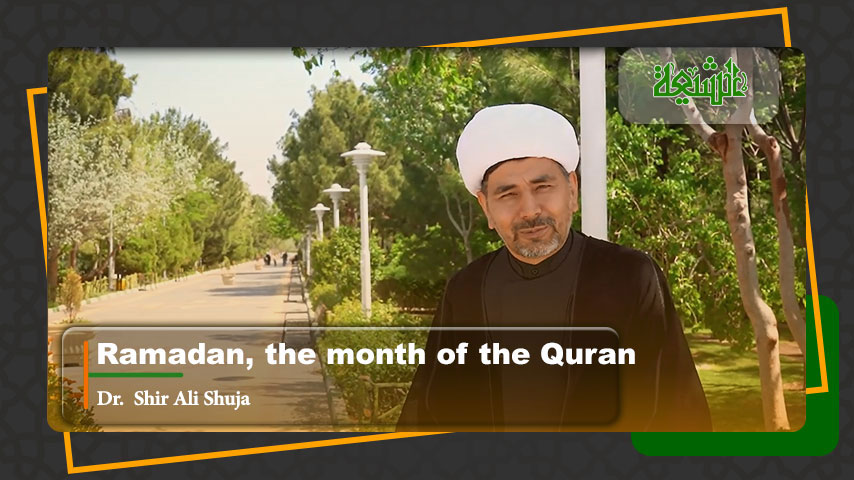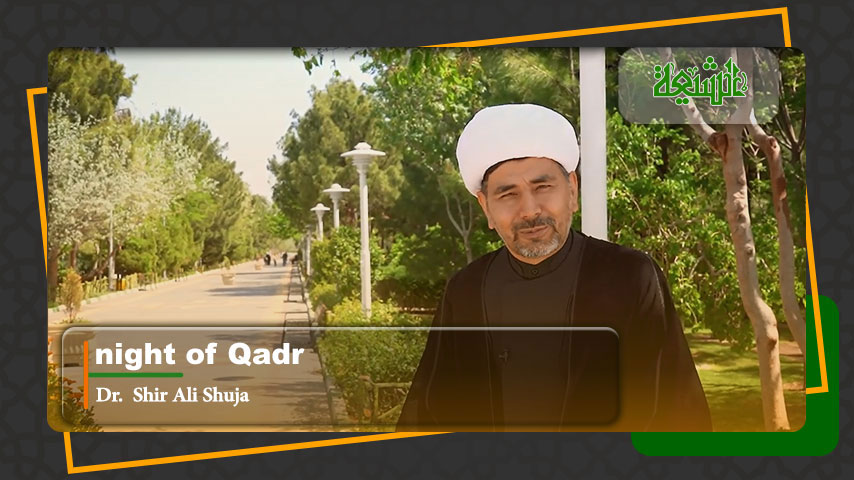The hadith concerning the “two precious things” known as hadith al-Thaqalayn is one of the most widely accepted and authoritative of all the traditions narrated from the Prophet (peace and blessings be upon him and his family) and it has also been recorded in the principal Sunni books of tradition. It possesses the highest degree of authenticity and acceptance. The text is as follows: “I leave among you two precious and weighty trusts, one being the Book of God and the other my Progeny. These two legacies will never be separated from each other, and if you lay firm hold of them you will never go astray.” (1)
Certain Sunni scholars even add the following sentence at the end of the hadith: “‘Ali is always with the Qur’an and the Qur’an is with ‘Ali; they too will not be separated from each other.” (2)
Hadith scholars attribute the transmission of this tradition to roughly thirty Companions of the Prophet. (3)
According to numerous hadith scholars and historians, Shi’i and Sunni alike, the Prophet (peace and blessings be upon him and his family) never failed at different times in this life, including its difficult last moments, to draw people’s attention to the profound link between these two great and authoritative sources of Islam; the Quran and his Progeny (Ahl al-Bayt), tracing out thereby an entire program for the future of Islam in a single instructive sentence.
Small differences are to be seen in the form of the relevant traditions, some being detailed and others concise depending on the occasion, but the content and meaning are always the same: the profound and indissoluble link between the Qur’an and the Progeny of the Prophet (peace and blessings be upon him and his family) the absolute interrelatedness of the two.
Ibn Hajar, a Sunni scholar, writes:
“We have mentioned earlier different versions of this hadith. Some of them relate to the utterances made by the Prophet at Arafah in the course of his Farewell Pilgrimage; others to pronouncements made while he was on his deathbed in Medina, surrounded by the Companions; another to his address at Ghadir Khumm; and yet another to statements made while returning from Ta’if.”
He then adds:
“None of these versions contradicts each other, for there is no reason why he should not have repeated the same truth on all these occasions, and on others as well, given the great significance that both the Qur’an and his Progeny possess. (4)
In another tradition known as the hadith of the Truth (hadith al-haqq), the Prophet (peace and blessings be upon him and his family) says: “‘Ali is with the truth and the truth is with ‘Ali; wherever the truth is, ‘Ali will incline to it.” (5)
We know that the verses of the Noble Qur’an form a compendium of the divine commands and laws of Islam; the teaching contained in them are a guarantee for man’s happiness and salvation. However, the interpretation and exegesis of the Qur’an have to be undertaken by persons who are acquainted with the language of revelation and who fully possess the necessary competence, in terms of both knowledge and conduct.
The Shi’ah, therefore, believe that those who possess this competence must be identified by the Prophet himself and appointed by him to administer the affairs of the people and guide them. It is they who understand the language of revelation and can properly acquit themselves of the task of interpreting and explicating God’s verses. The juxtaposition of the Progeny of the Prophet with the Qur’an is thus due to the need for the Qur’an for an exegesis that will set forth its purposes and regulations.
If we look carefully at the content of the hadith, we will see that to separate the Qur’an from the Progeny of the Prophet and to follow the utterances and views of persons unacquainted with its symbols and truths is bound to lead to error and misguidance. The tradition, therefore, implies that only the Progeny of the Prophet can establish the firm and categorical meaning of the verses in God’s Book that are allegorical.
The fact that the Prophet places the Qur’an and his Progeny side by side indicates that both are advancing in the same direction and toward the same goal: the Qur’an is a divine law and book, and the Progeny is its interpreters, executors and guardians. To separate and distance oneself from the Progeny is therefore to invite destruction.
The decline and deviance of the Muslims began when such a separation started to occur and men attempted to hold on to one of them separately. The thesis, “God’s Book alone is enough for us” came to prevail in their religious thinking, leading to the emergence of such schools as the Ash’ari and the Mu’tazilite. It was as if they knew the value of God’s Book better than the Prophet himself and better comprehended its significance!
It is possible to understand the Qur’an and explain the knowledge it contains only by referring to the utterances of those persons upon whom knowledge has been directly bestowed by God, or at least whose knowledge is derived from instruction by a particular source. Such persons can be only the Inerrant (Ma’sum) Imams of the Prophet’s Progeny.
To be continued!
NOTES:
_______________________________________
1. Muslim, al-Sahih, Vol. VII, p. 122; al-Tirmidhi, Jami’ al-Sahih, Vol. II, p. 308; al-Hakim, al-Mustadrak, Vol. III, p. 109. Ahmad b. Hanbal, al-Musnad, Vol. III, pp. 14-17. Ibn al-Sabbagh, Fusul al-Muhimmah, p. 24; al-Ganji, Kifayat al-Talib, p. 130; al-Qunduzi, Yanabi’ al-Mawaddah, pp. 17-18; al-Ya’qubi, al-Tarikh, Vol. II, p. 92; Fakhr al-Din al-Razi, al-Tafsir al-Kabir, Vol. III, p. 18; al-Naysaburi, Ghara’ib al-Qur’an, Vol. I, p. 349.
2. al-Qunduzi, Yanabi’ al-Mawaddah, pp. 32-40; Ibn Hajar, al-Sawa’iq, p. 57; al-Irbidi, Kashf al-Ghummah, p.43.
3. al-Halabi, al-Sirah, Vol. III, p. 308.
4. Ibn Hajar, al-Sawa’iq, p. 89.
5. Ibn Qutaybah, al-Imamah wa al-Siyasah, Vol. I, p. 68; al-Hamawini, Fara’id al-simtayn, Chapter 37. al-Khatib al-Baghdadi, Tarikh Baghdad, Vol. IV, p. 21; Fakhr al-Din al-Razi, Fusul al-Muhimmah.
















